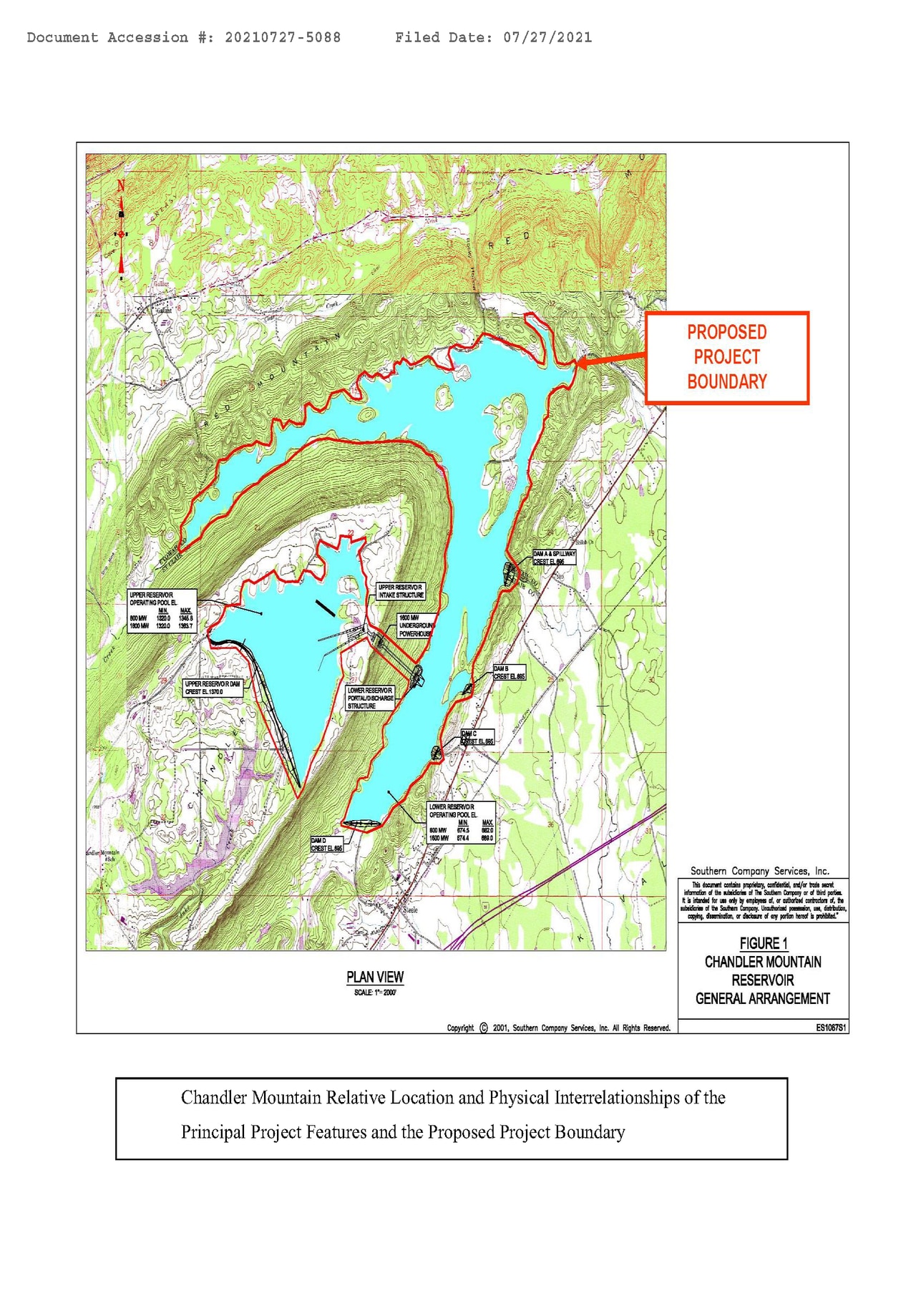âWhoâs going to buy my house now?â Alabama Power reservoir plan raises ire
Hundreds of northeast Alabama residents showed up hopping mad and demanding answers at two public meetings Monday to discuss Alabama Power’s controversial proposal to build a pumped storage energy project on Chandler Mountain that will likely involve pushing local residents off of their land.
“I do not want my family farm destroyed,” an emotional John Jones said during Monday’s evening session in Rainbow City.
The meetings, an afternoon and evening session hosted at the Rainbow City Community Center, each drew about 200 people.
Representatives of the Federal Energy Regulatory Commission spoke about the agency’s timeline for potentially approving the project, and Alabama Power presented an aerial mapped view of the areas that might be impacted by the project, including drone footage of the forested slopes of Chandler Mountain, with farmland atop the mountain and creeks and homes around the bottom.
But beyond these presentations, most questions went unanswered.
“It was a frustrating meeting because they didn’t come here to answer questions,” said Lana Boatwright after the afternoon session. “They wanted to see how many cages they rattled, in my opinion.”
Many of those who spoke at the meeting are owners of homes or farms in the area that might be submerged if the project moves forward, but the property owners don’t yet know for sure.
Officials said answers to many of their questions were not available because the finer details of the project haven’t been finalized yet.
“It is important to remember that no decisions have been made; we are in the preliminary stages of exploring the opportunity at Chandler Mountain,” Alabama Power said in an emailed statement.
“We regularly evaluate opportunities to improve our technology and operations so we can continue to power our state with the reliable and affordable energy our customers depend on. A pumped storage hydro facility could be a viable technology to reliably provide power to customers.”
The project would involve building one large dam to create an upper reservoir on top of the mountain, and four smaller dams to create a crescent-shaped lake down below.
A map included in the pre-application paperwork for the project shows the general locations for the two reservoirs included in the project.FERC
An underground pump station and turbine would push water up to the upper reservoir when power is plentiful, and capture the energy as the water falls down to the lower reservoir.
“It’s just like charging a battery,” said Alan Peeples, Alabama Power’s manager for hydro licensing and compliance.
Karen Bowen, 68, said she planned to sell her house in the next two years, but probably can’t now that she’s received a letter from Alabama Power informing her that her property might be part of the project.
“Once you open that letter, you have no property value,” Bowen said. “Who’s going to buy my house now? Nobody.”
The project would create two reservoirs at different elevations on or around Chandler Mountain, about 10 miles southeast of Gadsden. Alabama Power could store energy by pumping water to the upper reservoir during off-peak hours and letting it flow downhill over a turbine to provide power during peak usage hours.
But the project is still in the pre-application phase. Its boundaries aren’t set in stone and even if Alabama Power gets the project approved, it will be years before Alabama Power gets the go-ahead. An estimated timeline for the project has construction beginning in 2031.
Property owners in the area may not know for years whether or how much their land will be affected.
“Today was no answer for nobody,” said Jim Clay, a Steele policeman who attended the afternoon session.
“Now you’ve got 200 people anticipating that their land’s gonna be took and they’re gonna be doing it for five years,” Clay said. “So now the stress level on these 200 people are off the chain.”
There were some concrete details that were unveiled or confirmed about the project.
First, FERC project manager Sarah Salazar confirmed that some people could lose their land by eminent domain.
“If Alabama Power had a commission-issued license, it could acquire land through an eminent domain proceeding in a state court,” Salazer said.
Second, Alabama Power confirmed that the new lakes would not be available for recreational use.
The water level of the upper reservoir could change by 61 feet, and the lower reservoir by up to 25 feet, as water is pumped from one reservoir to the other.
“The fluctuations in the reservoirs will not allow for recreational use,” Alabama Power spokesperson Alyson Tucker said by email. Tucker said that there could potentially be recreational areas such as hiking or biking trails in the area, which would be explored during the application process.
But if and when the project would move forward, and exactly who would be impacted, are still maddeningly uncertain for residents here.
Bowen said that uncertainty puts her in limbo with regard to her plans for retirement.
“I’m supposed to put my life on hold, my plans on hold and just wait for Alabama Power to say ‘hmm, well maybe in a few years…’” Bowen said. “I don’t want to live like that. I hate limbo.”
“If you’re going to do it, tell me, let me make a decision, do it now. Don’t string me out for four or five or 10 years, saying ‘we don’t know what we’re going to do to you, but in the meantime your property is worthless.’”
